MINERAL PLASTERSLime&Clay
MINERAL PLASTERSLime&Clay
The most typical plaster for exteriors in the Venetian tradition
INTERIOR USE
EXTERIOR USE
GREEN
DESCRIPTION
The traditional color of Venetian facades is a pinkish-brown hue, and there is a unique reason for this. In the past, the facades of this old city were often coated with a Terracotta plaster made of lime and clay. The clay was sourced from old bricks and roof tiles, because exporting waste or importing raw materials was very costly in this city surrounded by shallow waters. This plaster was a derivative of an ancient Roman plaster, which was made by combining lime with Terra di Pozzuoli (today pozzolana), an earth containing a high percentage of clay. Indeed, Romans had discovered that the addition of clay conveys hydraulic properties to lime. This type of lime hardens even underwater, making it ideal for building in the midst of rivers and in the presence of high humidity, such as in the city of Venice.
LimeClay is the improved version of this terracotta plaster typical of the Venetian architectural tradition. It is an ideal plaster for exterior walls due to its incredible durability and moisture resistance. LimeClay, however, is also a healthy choice for indoors, as it helps regulate the balance and healthiness of the environment. How is this possible?
LimeClay Plaster is produced with hydrated lime and baked clay. The benefits of using clay plaster are well-known. Clay regulates relative interior humidity and protects the environment from infectious bacteria. Moreover, clay produces negative ions. Negatively ionized oxygen molecules attach themselves to red blood cells, which improves blood quality.
The advantage of using LimeClay is that by combining the benefits of lime with those of clay, we avoid the problems which come from using only raw clay. Raw clay is the perfect habitat for a variety of insects. Without being baked, we could be putting into place the perfect environment for small bugs to thrive. By baking the clay, besides eliminating a potential bug problem, we also avoid problems associated with the possible presence of heavy metals. Lime, on the other hand, is very alkaline, so it offers much more protection from moulds and fungus than raw clay does. Clay and lime keep the humidity of the house very balanced and that means it’s good for your well-being. A plaster made of clay alone is not as absorbent as that made of baked clay mixed with lime. Our Terracotta plaster is almost 20% more absorbent than normal plaster made of clay alone.
Hydrated lime is a porous and elastic binder, but it is not as hard and resistant as hydraulic lime. However, when mixed with clay, hydrated lime can retain its porous and breathable characteristics while also obtaining the hydraulic properties of durability and hardiness. This is due to the presence of alumina and silicate in clay, which are essential elements for achieving hydraulic properties.
Technical features
VERSIONS
Terracotta Beige
Terracotta Red
COLOURS
The material is available in natural beige or red, depending on the colour of the clay
RELATED PRODUCTS
Primers
Quartz Primer
Sealer
Interior: Hydrocalce
Exterior: Hydrocalce
Decorative Complement
Terracotta / Salt & Pepper / Mother of Pearl / Milled Marble / Mica / Glitter / Ebano Powder
Tools
SI Trowel, Scrapers, Sponge Float Coarse







